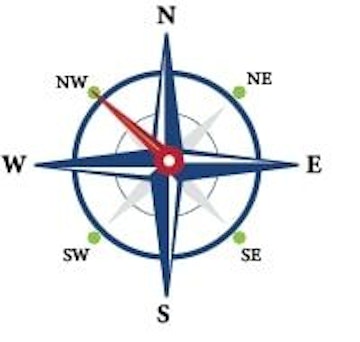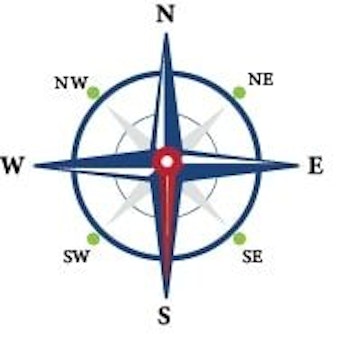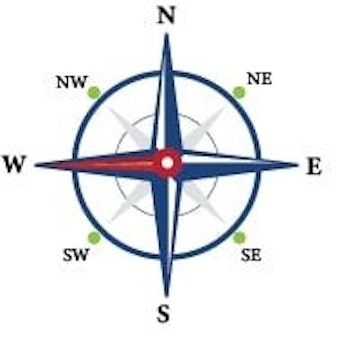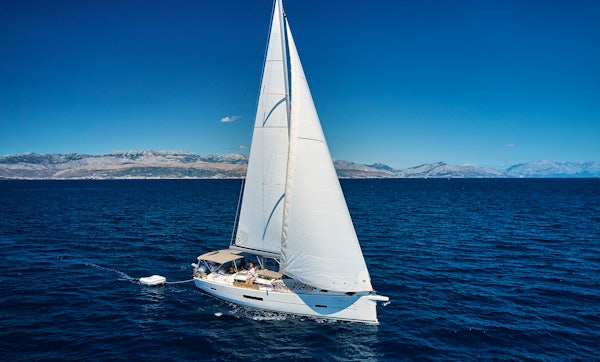Bura
It is definitely the most famous and coldest wind in Croatia. It is a very dry wind as well, blowing from NNE to ENE. The word originates from the word Green "going downhill" referring to the cold wind blowing down from the mountains. Apart from being cold, it is also a very heavy wind, finally hitting the sea at great speed and force.

Sailors won't be happy wherever Bura is blowing since, due to its strength, it causes a lot of troubles for them. But if you do have to sail during Bura time, do it around midday since it is weakest then and gets its full speed back again in the afternoon. Definitely avoid sailing in the early evening hours since that is when it strikes the strongest. Bura leaves a very unpleasant feeling on your skin and even makes breathing harder, but once it is gone the fresh air sensation is well worth of those cold wind strikes.
Jugo

Although not as furious as Bura, Jugo can also cause a lot of problems during sailing. Although the word in Croatian means ‘the wind blowing from the south’, this wind actually comes from southeast. In some parts in Croatia, it is sometimes referred to as Šilok. Although it appears throughout all four seasons, it is more frequent in the south than in the north of the Adriatic. It not only brings a lot of changes in the weather, such as low pressure, high humidity, clouds and rain frequently followed by thunder, but it also causes a change in mood, resulting in "fjaka" in locals or, in other words, “weariness”.
Maestral
If Bura is the "enemy" of the sailor, that we can call Maestral their friend and ally. Maestral can be referred to as a summer wind, which cools you down during extremely hot days. It blows from the sea towards the land because of the differences in temperature between the land and sea itself. While blowing, it follows the sun so in the morning it blows from south to east, changing its direction in the afternoon and blowing in the north-west direction. It is definitely stronger in central, and especially southern Adriatic than the northern areas. The absence of the Maestral wind means a great change in the weather that follows.


Levant

This is a cold wind blowing from the east usually bringing clouds and rainfall. It can bring warm weather, in which case it resembles Jugo, or it can bring cold weather, in which case it resembles Bura. Nevertheless, it is a winter wind appearing most often in February and March. Although it is suitable to sailors due to its force, it can still bring cold weather which many sailors will not like.
Tramontana

Tramontana usually blows in a strong northern to northwestern direction, just after Bura or rain, announcing peaceful weather. Although It doesn’t blow as strongly as Bura, the further it goes away from the coast, the larger waves it causes. So, once it reaches the open sea it can blow quite strong, reminding us exactly of Bura.
Oštro

The Oštro is a wind blowing from the south preceding Maestral. We can call it a transitional wind since it appears when Jugo turns west, causing unpleasant weather, large waves, rain and clouds. Sometimes it keeps blowing all day long, lasting until sunset.
Lebić

Lebić is a very unpleasant wind, especially for many harbours along the Adriatic coastline. It blows from the southwest, and in some places they call it the Garbin or Grbin. If you see a cloudy sky, it is most likely that on the same day Lebić is also blowing, and it is not unlikely that rain or some short-term showers might follow soon after. It is problematic also during sailing and reaching the harbour might be hard due to the great waves that it produces.
Pulenat

In this case, we are talking about a wind mostly coming from the west. It appears when Jugo suddenly turns directly towards the south, all the way to the west. Usually, it does not blow too strong or for too long. However, for sailing into small harbours or coves, it can be quite a challenge since, like some other winds, it also creates big waves and disturbs the calm sea. Pulenat can very often be followed by a very forceful Bura.


